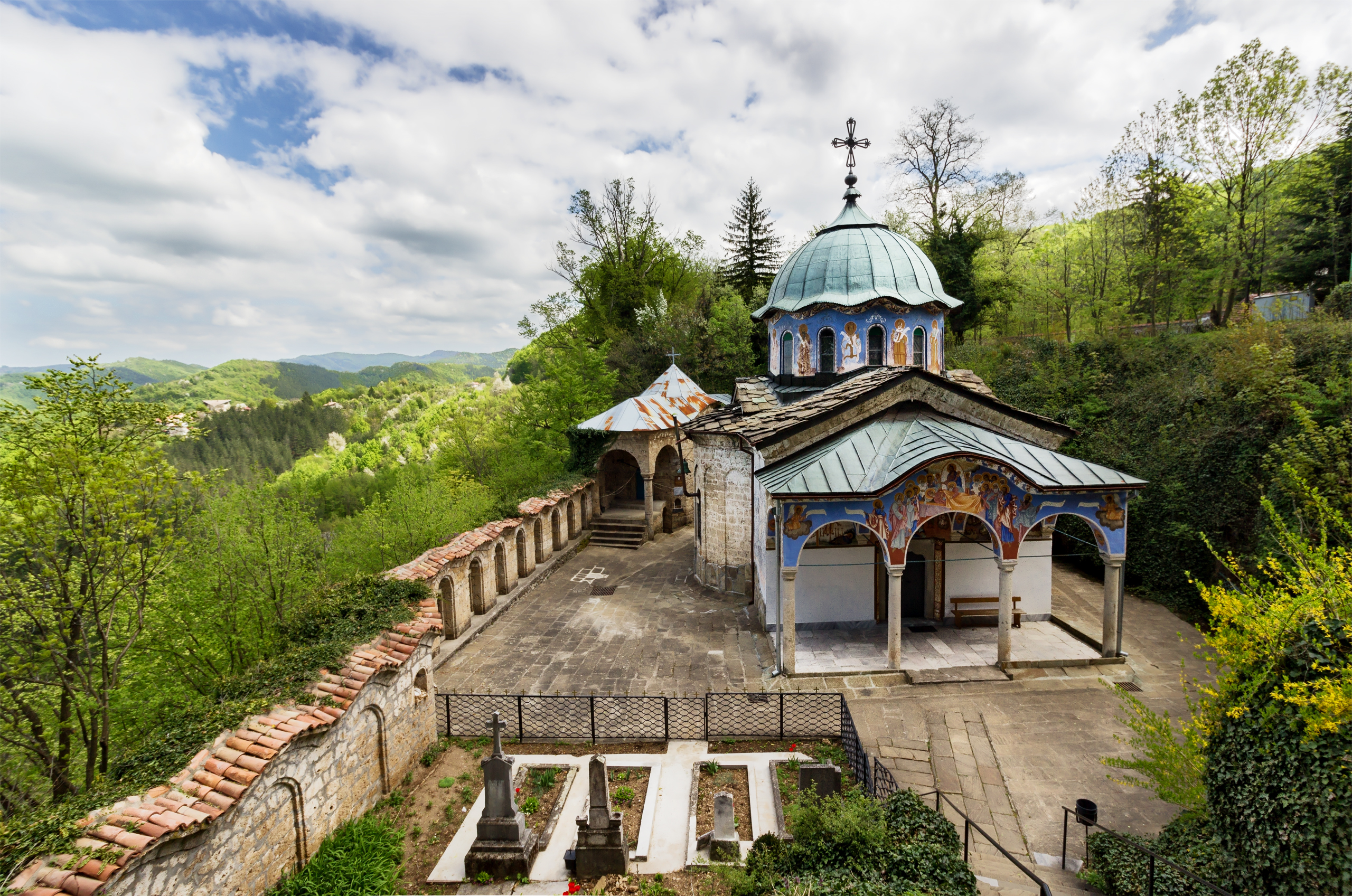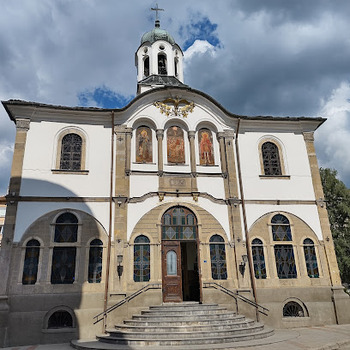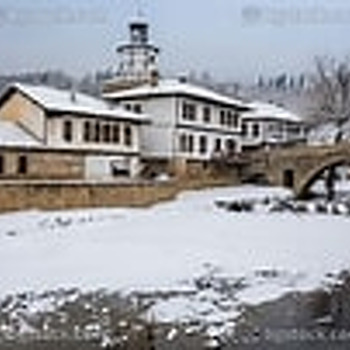Sokolski Monastery
Overview
Sokolski Monastery "Assumption", also called Gabrovo-Sokol or Gabrovo Monastery, is a functioning nunnery of the Bulgarian Orthodox Church, located in northern Bulgaria, near Gabrovo. The monastery was founded in early 1833 by Josif Sokolski.
The monastery is located in the area of Sokolova Cave on the upper reaches of the Yantra River, among the northern slopes of Stara Planina, 4 km south of the ethnographic village of Etara and 12 km southeast of Gabrovo. There is a bus transport to the monastery, and from Etara you can reach the marked paths in less than two hours.
Sokolova Cave area gives the name to both the monastery and its creator, Archimandrite Yosif Sokolski.
Sokolski Monastery was founded in 1833 by Archimandrite Joseph, later known in the struggle for church autonomy as the Uniate Archbishop Joseph Sokolski. He arrives in his homeland from the Troyan Monastery accompanied by Hieromonk Agapius.
The church and the first residential building were built by the famous foreman Konstantin from Peshtera, who would later also build the cathedral churches of the Troyan and Batoshevski monasteries. In the yard with the residential buildings is the famous Sokolska fountain, which is pointed out as the work of the first master Nikola Fichev.
The newly founded monastery was inaugurated on August 15, 1834 by Metropolitan Ilarion Tarnovski. In 1836, Josif Sokolski opened a school in the monastery, where Neofit Bozveli was a teacher for a short time. In the monastery Yosif Sokolski also opened a literary center. Deacon Hilarion was sent to Tarnovo to study the psalter, to seek and prepare teachers.
On July 31, 1856, the detachment of Captain Grandfather Nichola (1856) was established here, with the intention of making it the center of the uprising he was preparing. The detachment's flag is also lit here. Vasil Levski also found shelter here.
For years, the church of Sokolski Monastery stood without decoration. It was without frescoes, without a nice iconostasis, with poor flooring. The Russian vice-consul from Plovdiv Naiden Gerov, who visited the monastery on his temple holiday (August 15) 1858, noted with indignation that the church was left in a neglected state, devoid of any decorations, and did not even have a temple icon "Assumption".
In 1862, priest Pavel Zograf and his son Nikola from the village of Shipka, Kazanlak region, decorated the nave of the church and its narthex with frescoes. In the same year the iconostasis with royal and festive icons was made by the famous representatives of the Tryavna school Ioaniki, Pope Vitanov, Simeon Tsonyuv and others. 2,500 groschen were spent on its construction. 6 large royal icons and 15 small festive icons were placed on it. Jesus Christ is depicted in the dome. The temple icon was painted by the Gabrovo painter Hristo Tsokev and is his donation. It is signed: "Painting Hr. Tsokev, Gabrovo, August 8 1880. " In 1868 Usta Kolyo Ficheto built a stone fountain, today a valuable architectural monument.
On May 1, 1876, the rebels of Duke Tsanko Dustabanov gathered and from here the Gabrovo detachment began its battle journey. During the April Uprising of 1876, Dustabanov's detachment was sheltered here. From the monastery, blessed by the monks, they set out and fought in the villages of Kravenik and Novo Selo. The Turks defeated the detachment, and eight of the rebels hung on the gallows on the rocks near the monastery, and their bodies were thrown into the abyss. Dustabanov hangs on the gallows in Tarnovo.
During the Russo-Turkish War (1877-1878) the monastery was turned into a military hospital.
From its foundation until 1959 the monastery was male and more than 100 monks served in it. The monastic fraternity was headed by 15 abbots. In 1839, Archimandrite Yosif Sokolski founded the Holy Annunciation convent in Gabrovo, which was blown up in 1959 by the communist authorities in Bulgaria, and the nuns were transferred to the Sokol Monastery. In the northern part of the monastery in 1968 the nuns arranged the chapel of the Holy Annunciation and exhibited the preserved iconostasis and the icons of Jesus Christ and the Holy Mother of God with the Infant, painted by Zahari Zograf.
Recommended
- Home of humor and satire
- Planetarium
- Monument to Racho Kovacha
- Dechkova's house
- Interactive Museum of Industry
- Museum of History
- National Museum of Education
- Art Gallery
- Gradishte Fortress and others


 Bulgarian
Bulgarian Romanian
Romanian



